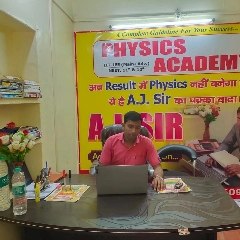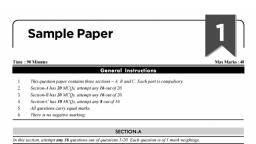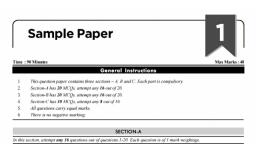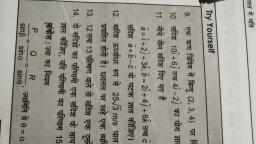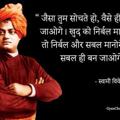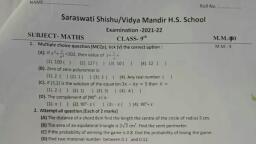Question 1 :
The magnitude of resultant of two equal forces is double the magnitude of either of forces. The angle between them is:
Question 3 :
$\vec A$ and $\vec B$ are vectors, and $\theta$ is the angle between them. What can you do to maximize $\vec A \cdot \vec B$ ?<br/>I. Maximize the magnitude of A<br/>II. Maximize the magnitude of B<br/>III. Set to $90^o$
Question 4 :
Assertion: $\vec A \times \vec B$ is perpendicular to both $\vec A + \vec B$ as well as $\vec A -\vec B$
Reason: $\vec A +\vec B$ as wll as $\vec A -\vec B$ lie in the plane containing $\vec A$ and $\vec B$, but $\vec A \times \vec B$ lies perpendicular to the plane containing $\vec A $ and $\vec B$
Question 5 :
If a vector $2\hat{i}+3\hat{j}+8\hat{k}$ is perpendicular to the vector $4\hat{j}-4\hat{i}+\alpha \hat{k}$, then the value of $\alpha$
Question 6 :
The vector $\vec{P}=a\hat{i}+a\hat{j}+3\hat{k}$ and $\vec{Q}=a\hat{i}-2\hat{j}-\hat{k}$ are perpendicular to each other. The positive value of $a$ is
Question 7 :
$\vec A \times \vec B$ = $\vec B \times \vec A,$ then the angle between $\vec A$ and $\vec B$ is
Question 9 :
The angular velocity of a rotating body is $\vec{\omega}=4\hat{i}+\hat{j}-2\hat{k}$. The linear velocity of the body whose position vector is 2$\hat{i}+3\hat{j}-3\hat{k}$ is:<br/>
Question 10 :
Find a vector perpendicular to $i+2j$ magnitude of $3\sqrt 5 $
Question 11 :
Given, $\displaystyle \vec { \omega } =2\overset { \wedge }{ k } $ and $\displaystyle \vec { r } =2\overset { \wedge }{ i } +2\overset { \wedge }{ j } $. Find the linear velocity.
Question 12 :
The position vector of a particle is given by $\vec{r}=1.2t\hat {i}+0.9t^2\hat {j}- 0.6(t^3-1)\hat {k}$ where $t$ is the time in seconds from the start of motion and where $\vec{r}$ is expressed in metres. <br/>Determine the power $\begin{pmatrix}P=\vec{F}.\vec{v}\end{pmatrix}$ in watts produced by the force $\vec{F}=\begin{pmatrix}60\hat {i}-25\hat {j}-40\hat {k}\end{pmatrix}N$ which is acting on the particle at time $t=4$ seconds.
Question 13 :
The magnetic of $\bar {A}\times (\bar {A} \times \bar {B})$ is equal to ($\theta$ is the angle between $\bar {A}$ and $\bar {B}$)
Question 14 :
If the angle between two vectors is $ 60^o $, then $ \dfrac { \vec A.\vec B }{ |\vec A \times \vec B | } $ is
Question 15 :
If $\vec A=3\hat i+4\hat j$ and $\vec B=6\hat i+8\hat j$ and A and B are the magnitudes of $\vec A$ and $\vec B$, then which of the following is not true?
Question 16 :
The line of action of a force $\vec{F}=\begin{pmatrix}-3\hat {i}+\hat {j}+5\hat {k}\end{pmatrix}\;N$ passes through a point $(7,3,1)$. The moment of force $(\vec{\tau}=\vec{r}\times\vec{F})$ about the origin is given by
Question 17 :
A force $-F\ \widehat{k} $ acts on O, the origin of the coordinate system.The torque about the point (-1,1) is
Question 18 :
If $\overrightarrow{P}$ is directly vertically upwards and $\overrightarrow{Q}$ is directed towards north then direction of $\overrightarrow{P} \times \overrightarrow{Q}$ vector is directed towards :
Question 19 :
If $\vec {P}\times \vec {Q} = \vec {0}$ and $\vec {Q} \times \vec {R} = \vec {0}$, then the value of $\vec {P}\times \vec {R}$ is
Question 20 :
Three vectors $\vec A, \vec B$ and $\vec C$ satisfy the relation $\vec {A}\cdot \vec {B}=0$ and $\vec{A}\cdot \vec{C}=0$. The vector $A$ is parallel to :
Question 21 :
If vectors $ A=cos \omega t \hat { i } +sin\quad \hat { j } $ and $ B =cos \dfrac { \omega t }{ 2 } \hat { i } +sin \frac { \omega t }{ 2 } \hat { j } $ are functions of time, then the value of t at which they are orthogonal to each other
Question 22 :
A force $\displaystyle \left ( 3\hat{i}+4\hat{j} \right )$ N acts on a body and displaces it by $\displaystyle \left ( 3\hat{i}+4\hat{j} \right )$ metre. The work done by the force:
Question 24 :
$If\,{a^ \to } \times {b^ \to } = {c^ \to }\,and\,{b^ \to } \times {c^ \to } = {a^ \to },\,then$
Question 25 :
If $\overset{\rightarrow}{A}=\hat{i}-2\hat{j}-3\hat{k}\overset{\rightarrow}{B}=2\hat{i}+\hat{j}-\hat{k}$ and ${\vec C}=\hat{i}+3\hat{j}-2\hat{k}$, then the magnitude of $\overset{\rightarrow}{A}\times (\overset{\rightarrow}{B}\times \overset{\rightarrow}{C})$ is______
Question 26 :
$\mathrm{A}$ force $\vec{F}=2\hat{i}+4\hat{j}+\hat{k}$ acts on a body and produces a displacement of $\vec{S}=3\hat{i}+2\hat{j}+5\hat{k}$. Work done is:<br/>
Question 27 :
Let $\hat{N}$ represent the direction horizontally north, $\widehat{NE}$ represent northeast (halfway between north and east), and so on. Each direction specification can be thought of as a unit vector. Rank from the largest to the smallest the following dot products. Note that zero is larger than a negative number. If two quantities are equal, display that fact in your ranking.<br>
Question 28 :
$\mathrm{A}$ and $\mathrm{B}$ are two perpendicular vectors given by $\vec{A}=5\hat{i}+10\hat{j}-3\hat{k}$ and $\vec{B}=2\hat{i}+4\hat{j}-c\hat{k}$. The value of $\mathrm{c}$ is:<br/>
Question 30 :
If the scalar and vector products of two vector are $4\sqrt{3}$ and $144$ respectively, what is the angle between the two vectors?<br/>
Question 31 :
A vector $ \vec{F} $ is acting along positiove $Y-$ axis. If the vector product with another vector $\vec{F_2}$ is zero then $\vec{F_2} $ could be :
Question 32 :
If $ \overrightarrow A \times \overrightarrow B = \overrightarrow B \times \overrightarrow C = \overrightarrow C \times \overrightarrow A $ then $ \overrightarrow A + \overrightarrow B + \overrightarrow C $ is equal to:
Question 33 :
For three non-zero vectors $\vec{a}$, $\vec{b}$, $\vec{c}$ the relation $\left |(\vec{a}\times \vec{b}).\vec{c} \right |$ =$\left | \vec{a} \right |\left | \vec{b} \right |\left | \vec{c} \right |$ will hold true if and only if:
Question 34 :
The maximum magnitude of cross product of two vectors is $12$ units and the maximum magnitude of their resultant in $7$ units, then their minimum resultant vector will be a:
Question 35 :
Force acting on a particle is $\begin{pmatrix}2\hat {i}+3\hat {j}\end{pmatrix}N$. Work done by this force is zero, when the particle is moved on the line $3y+kx=5$. Here value of $k$ is<br>

























